
How to Use HC-SR04 Ultrasonic Sensor: Examples, Pinouts, and Specs
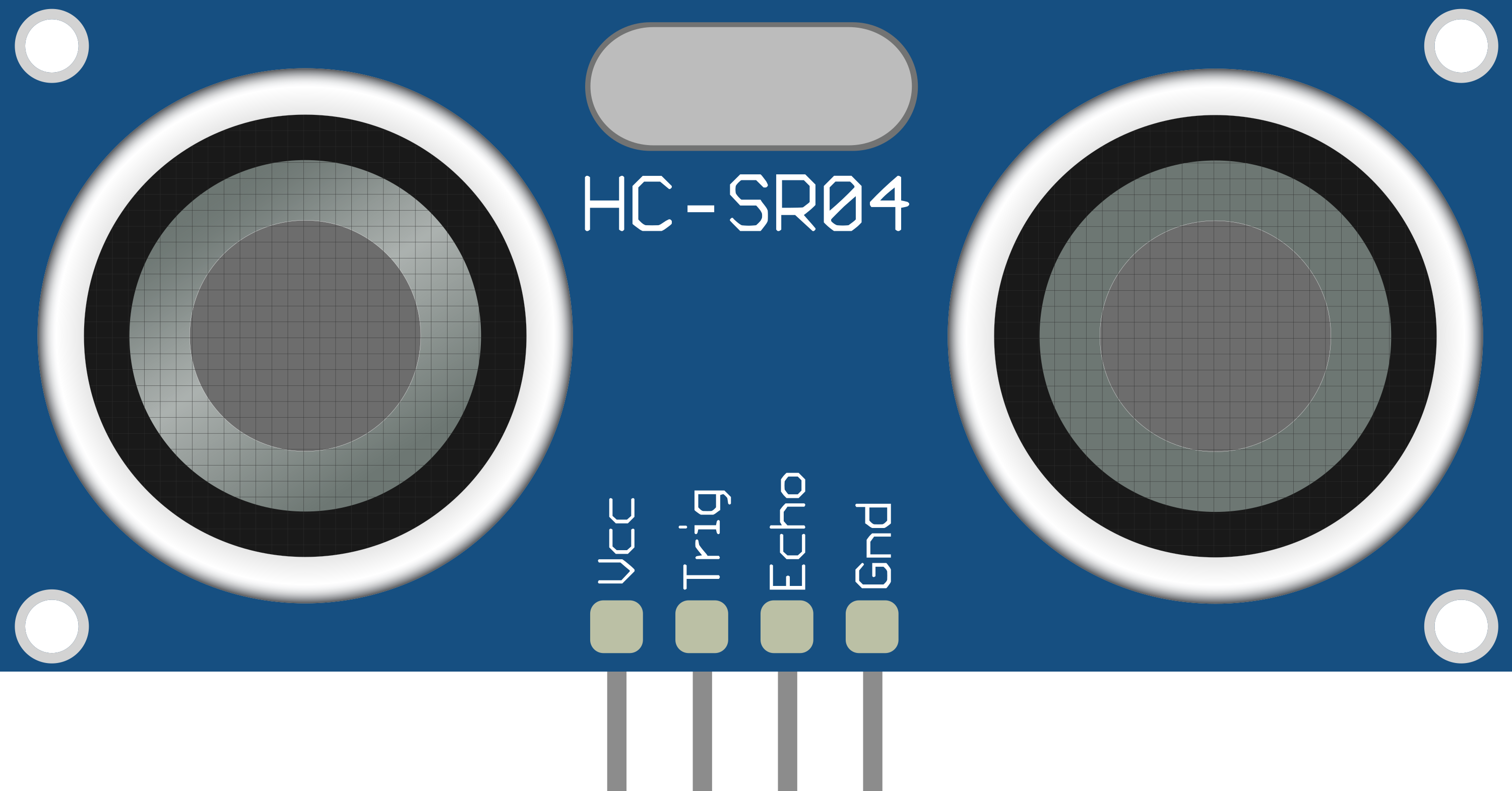
 Design with HC-SR04 Ultrasonic Sensor in Cirkit Designer
Design with HC-SR04 Ultrasonic Sensor in Cirkit DesignerIntroduction
The HC-SR04 Ultrasonic Sensor is a versatile and cost-effective sensor that measures distance by emitting ultrasonic waves and detecting the time it takes for the echoes to return. It is widely used in robotics, obstacle avoidance systems, and range detection applications due to its non-contact measurement capability.
Explore Projects Built with HC-SR04 Ultrasonic Sensor
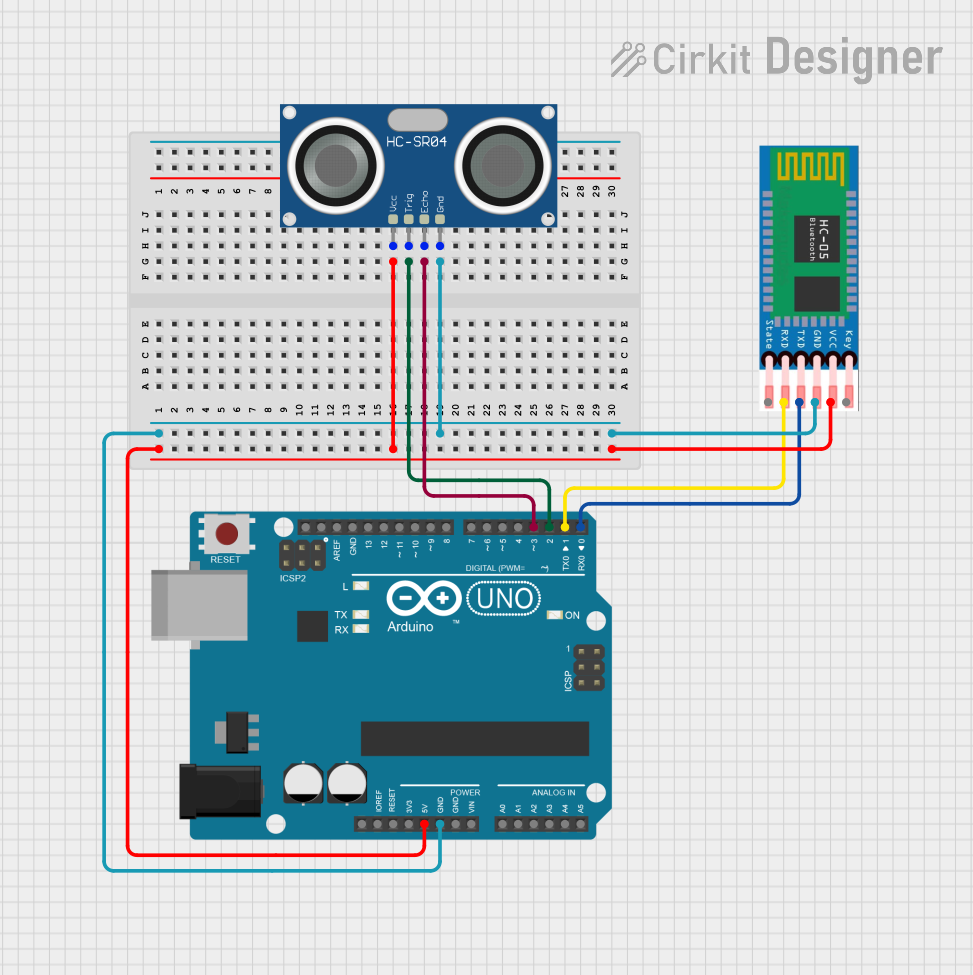
 Open Project in Cirkit Designer
Open Project in Cirkit Designer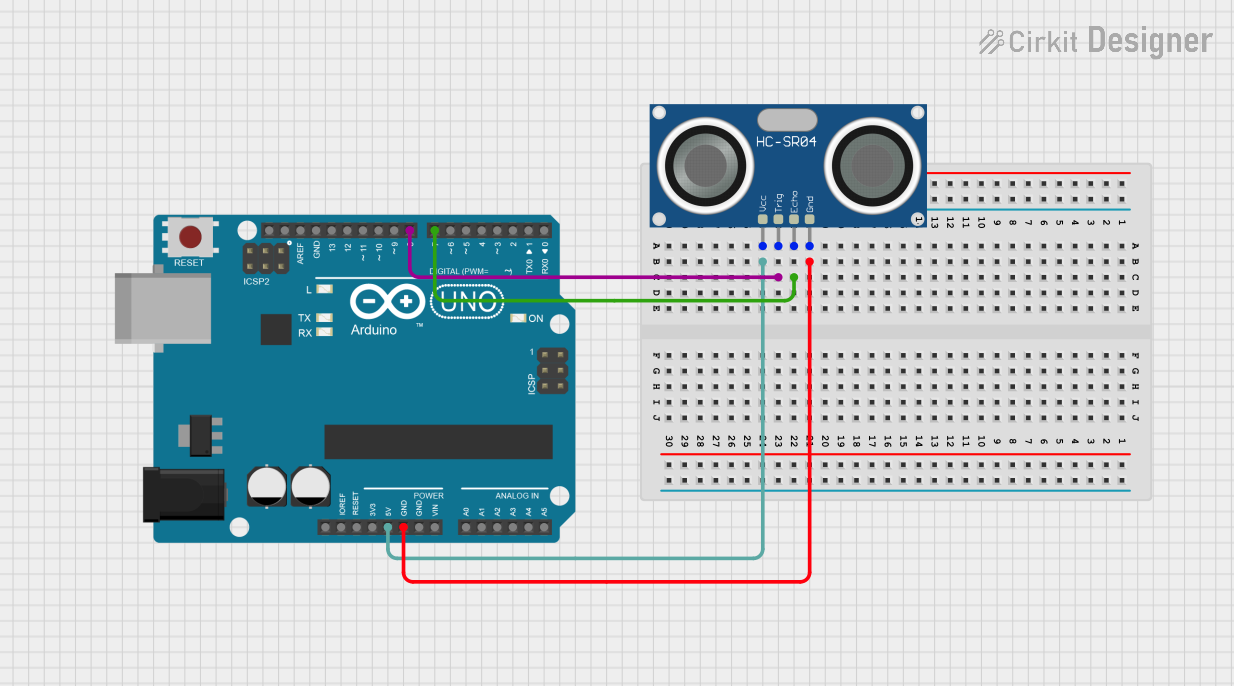
 Open Project in Cirkit Designer
Open Project in Cirkit Designer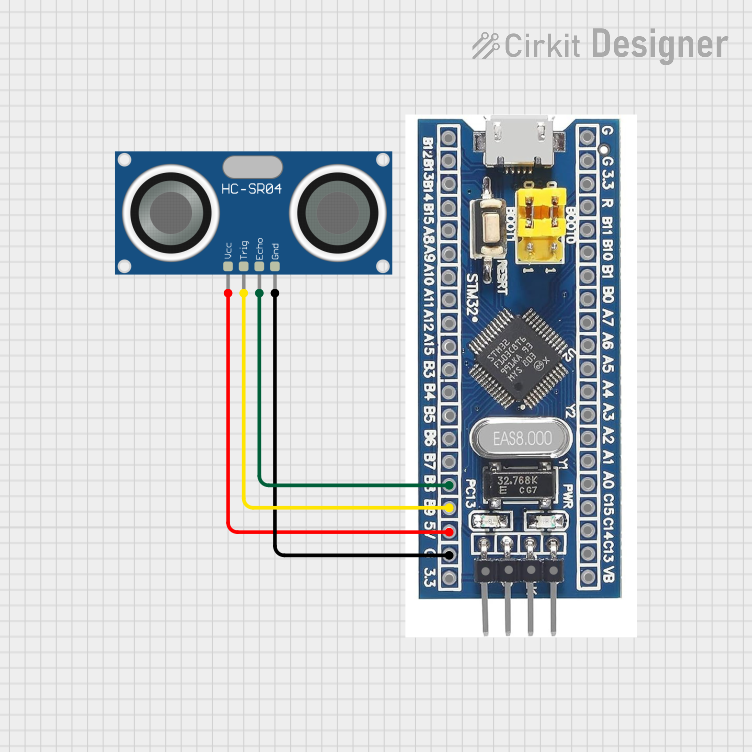
 Open Project in Cirkit Designer
Open Project in Cirkit Designer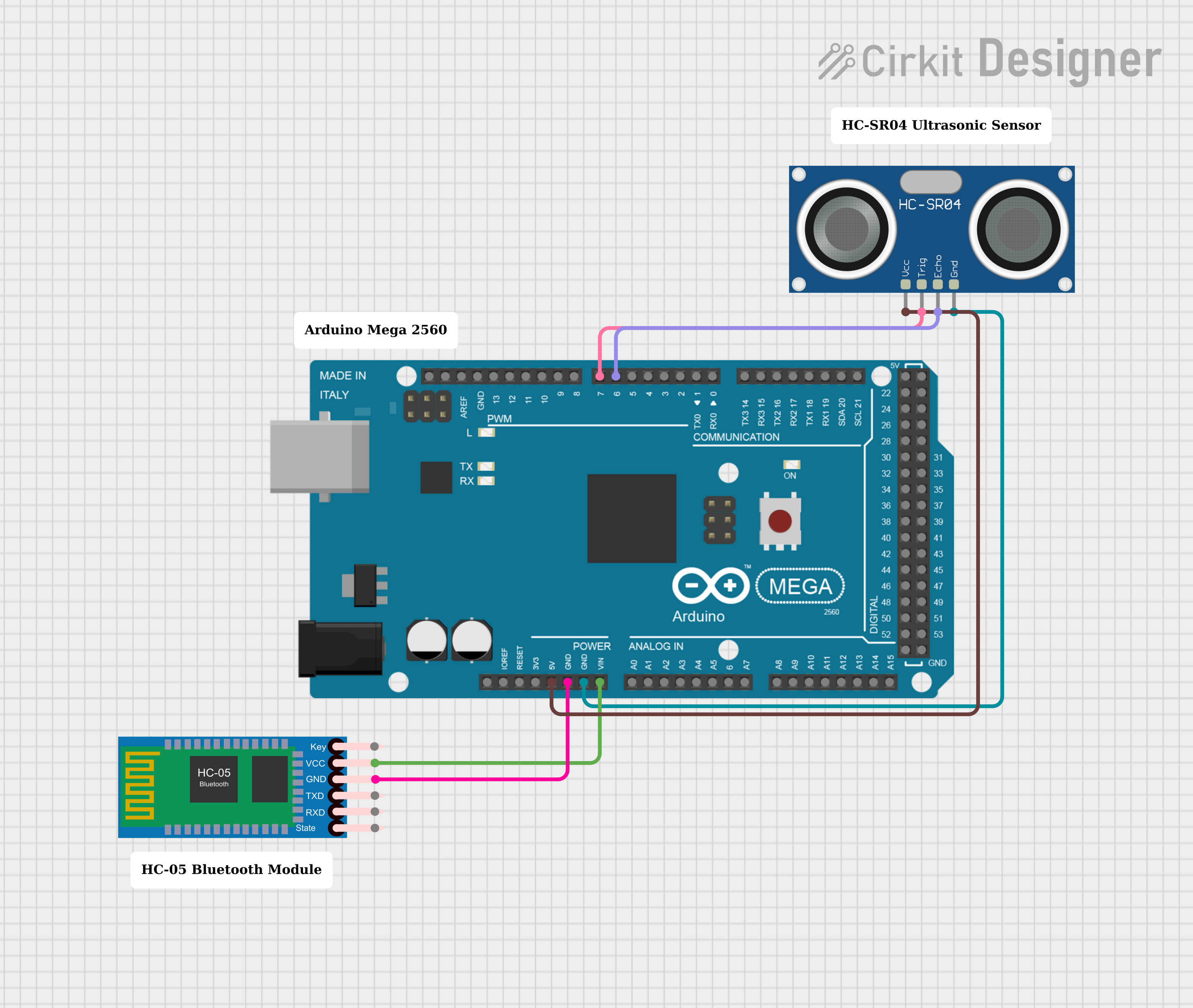
 Open Project in Cirkit Designer
Open Project in Cirkit DesignerExplore Projects Built with HC-SR04 Ultrasonic Sensor

 Open Project in Cirkit Designer
Open Project in Cirkit Designer
 Open Project in Cirkit Designer
Open Project in Cirkit Designer
 Open Project in Cirkit Designer
Open Project in Cirkit Designer
 Open Project in Cirkit Designer
Open Project in Cirkit DesignerCommon Applications and Use Cases
- Robotics for obstacle detection and navigation
- Distance measurement for parking sensors
- Level control in tanks or bins
- Interactive installations and proximity-based triggers
Technical Specifications
Key Technical Details
- Operating Voltage: 5V DC
- Operating Current: 15 mA
- Ultrasonic Frequency: 40 kHz
- Max Range: 4m
- Min Range: 2cm
- Resolution: 3 mm
- Measuring Angle: 15 degrees
Pin Configuration and Descriptions
| Pin Number | Pin Name | Description |
|---|---|---|
| 1 | VCC | Power supply (5V DC) |
| 2 | Trig | Trigger input (TTL pulse) |
| 3 | Echo | Echo output (TTL level signal) |
| 4 | GND | Ground |
Usage Instructions
How to Use the Component in a Circuit
- Connect the VCC pin to the 5V output on the Arduino UNO.
- Connect the GND pin to one of the GND pins on the Arduino UNO.
- Connect the Trig pin to a digital I/O pin on the Arduino UNO.
- Connect the Echo pin to another digital I/O pin on the Arduino UNO.
Important Considerations and Best Practices
- Ensure that the sensor is mounted on a stable surface to avoid measurement errors.
- Avoid using the sensor in environments with high dust, humidity, or temperature fluctuations.
- Keep the sensor's path clear of obstacles for accurate measurement.
- Use a pull-up resistor if the Echo pin signal is weak.
Example Code for Arduino UNO
#include <Arduino.h>
// Define the Trig and Echo pin:
#define TRIG_PIN 9
#define ECHO_PIN 10
void setup() {
// Initialize serial communication:
Serial.begin(9600);
// Define the Trig pin as an output and the Echo pin as an input:
pinMode(TRIG_PIN, OUTPUT);
pinMode(ECHO_PIN, INPUT);
}
void loop() {
// Clear the Trig pin condition:
digitalWrite(TRIG_PIN, LOW);
delayMicroseconds(2);
// Set the Trig pin HIGH for 10 microseconds:
digitalWrite(TRIG_PIN, HIGH);
delayMicroseconds(10);
digitalWrite(TRIG_PIN, LOW);
// Read the Echo pin; pulseIn returns the duration (length of the pulse) in microseconds:
long duration = pulseIn(ECHO_PIN, HIGH);
// Calculate the distance (in cm) based on the speed of sound (340 m/s):
long distance = duration * 0.034 / 2;
// Print the distance on the Serial Monitor:
Serial.print("Distance: ");
Serial.print(distance);
Serial.println(" cm");
// Delay for a half-second before the next measurement:
delay(500);
}
Troubleshooting and FAQs
Common Issues Users Might Face
- Inaccurate Readings: Ensure that the sensor is not facing any obstacles within its range and that it is mounted securely.
- No Readings: Check the wiring, especially the VCC and GND connections, and ensure that the pins are correctly defined in the code.
- Intermittent Readings: This could be due to electrical noise or interference. Try adding a capacitor between VCC and GND near the sensor.
Solutions and Tips for Troubleshooting
- If the sensor is not functioning, try replacing it with another one to determine if the issue is with the sensor itself.
- Use serial print statements to debug and check if the sensor is getting triggered and if the Echo pin is receiving the signal.
- Ensure that the Arduino UNO board is not overloaded with too many tasks, as this can affect the timing and performance of the sensor.
FAQs
Q: Can the HC-SR04 sensor detect objects with soft surfaces? A: The sensor may have difficulty detecting soft or angled surfaces because they can absorb or deflect ultrasonic waves.
Q: What is the maximum range of the HC-SR04 sensor? A: The maximum range is approximately 4 meters, but optimal performance is usually within 2 meters.
Q: Can I use the HC-SR04 sensor with a 3.3V system? A: The HC-SR04 is designed for 5V systems. Using it with 3.3V may result in insufficient operation or damage to the sensor. Use a level shifter or a compatible sensor for 3.3V systems.
Note: The HC-SR04 Ultrasonic Sensor is not manufactured by Arduino UNO. The Arduino UNO is a microcontroller board used to interface with and control various electronic components, including the HC-SR04. The manufacturer part ID "Uno" refers to the Arduino UNO board, not the sensor itself.